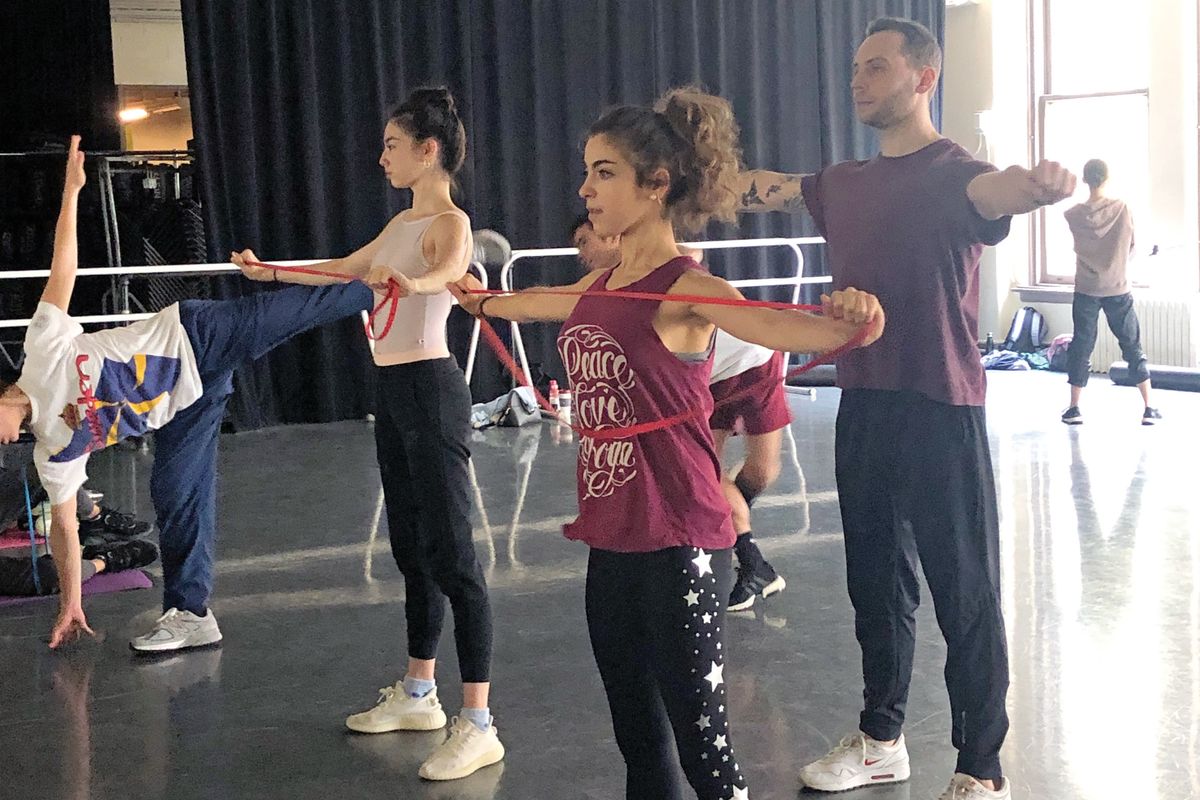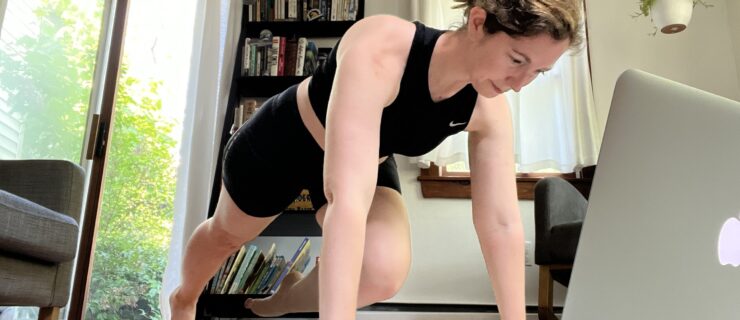The Rules of Conditioning: Roman Zhurbin's Guidelines for Ballet Dancers
When Roman Zhurbin isn’t dancing as a soloist with American Ballet Theatre, he’s exercising his other passion: fitness. As a certified personal trainer, he coaches dancers through his side business, Roman Empire Fitness, and co-teaches a strength and conditioning class to ABT Studio Company with fellow company member Thomas Forster. We spoke with Zhurbin about the ingredients for a solid conditioning program for ballet dancers. If you’d like to increase your strength and reduce your injury risk, these guidelines are paramount.
Keep It Simple
Most exercises in Zhurbin’s conditioning classes for ABT Studio Company use a dancer’s own body weight or simple props like resistance bands. “It’s not a magic trick,” he says. “These are simple exercises that everybody knows,” like push-ups, lunges, bridges and squats. Single-leg exercises (like one-legged bridges), says Zhurbin, are especially important for dancers. A trainer can help you devise a program that fits your goals, and then work with you to increase its difficulty as you build strength.
Don’t Do It for the ‘Gram
“I stay away from those crazy exercises that could injure a dancer, like BOSU ball balances,” he says. Always ask yourself why you’re doing an exercise. What muscles are you aiming to strengthen? How does it connect to dance? “I see everybody on Instagram doing it, so I’m going to do it, too” doesn’t cut it.
Don’t Overdo
A busy performance season isn’t the time to ramp up your strength training. “It’s more about maintaining strength and not fatiguing the dancers so when they dance they could potentially get hurt,” he says. If you’re on a break or have a lighter schedule, then you can really work on building strength in an area that’s weak, whether it be the knees, shoulders, ankles, glutes or core. Overall, Zhurbin recommends strength-training twice a week.

Spend Time Working in Parallel
Zhurbin often sees dancers with hamstrings or glutes that are weak or not firing properly. He attributes this to all of the time spent working turned out in ballet. “When you externally rotate, the front of the body turns on—the quads, the psoas,” he says. “You’re not using very much of the back side of the body.” To combat this imbalance, he recommends conditioning in parallel with exercises like lunges, bridges and parallel sidesteps across a room (with a resistance band looped around your ankles and knees bent).
Stick With an Exercise
Don’t do a completely different group of exercises each time you work out. “Concentrate on one exercise, get good at it and then move on,” says Zhurbin. He recommends keeping an exercise in your regimen for six to eight sessions. Each workout, your trainer can gauge your progress and adjust the difficulty as needed. Take push-ups, for example: You might start with your knees on the floor, then move on to an inclined version (knees up, with your hands on something slightly elevated off the floor, like a low bench) and finally to a traditional push-up.
Honor Where You Are
Pushing yourself is good, but doing something your body can’t handle yet can get you into trouble. For instance, a dancer might insist on doing regular push-ups, but they sink in the shoulders and lower back when they attempt them. That’s a case when Zhurbin will suggest a more suitable modification. “But the body adapts to what you’re doing really fast. Your third workout doing push-ups on your knees, you may be able to throw in one set of regular push-ups.”
Get Your Heart Rate Up
Zhurbin finishes his classes with cardiovascular conditioning, choosing a drill like burpees, an agility challenge like ladder work, or a series of jumps. “When you do cardiovascular exercise, your body builds up lactic acid really quickly and that’s why you get fatigued,” he says. The more you do this type of exercise, the better your stamina. “Your body is able to pump the oxygen to the muscles, and you can go for longer and conserve strength.” This translates directly to stage time. “You have more gas in the tank.”
A Sample Session
A typical group workout for ABT Studio Company starts with foam rolling and warm-ups before dancers dive into an eight-station circuit.
They spend 40 seconds at a station, rest for 20 seconds, and then move on to the next one. Dancers aim to complete 3 rounds of the entire circuit, which features simple, full-body exercises focused on the following elements:
- Core (planks, side planks)
- Power (box jumps, medicine ball throws, agility ladder)
- Pushing (push-ups, overhead press with kettlebell)
- Pulling (pull-ups, TRX row)
- Knee-dominant (squats, lunges)
- Hip-dominant (bridges)
The workout finishes with a dynamic exercise that gets dancers’ heart rates up, like burpees or running through a rope ladder.
Should Men Bulk Up?
 Getty Images
Getty ImagesWhile dancer and personal trainer Roman Zhurbin acknowledges that young men should strengthen their upper body for partnering, intensive weight training isn’t the safest option. Unless you’re working with a trainer consistently who can spot you and guide you through exercises with proper form, “body weight usually works best,” he says. “Doing weights feels good on the ego,” but incorrect form, especially in hypermobile dancers, can lead to lower back or shoulder pain and even injury.
Instead, Zhurbin recommends that young men start with exercises using their own body weight or resistance bands. Focus on pushing and pulling movement patterns, in particular. If your dance program doesn’t have a conditioning coach, Zhurbin recommends YouTube as a resource for general fitness tips, though he cautions against following fad workouts. “YouTube has many channels where you can find body weight exercises with a coach giving tips for what to watch out for—things like keeping your knee between the little toe and big toe, and having the right posture and weight distribution.”





